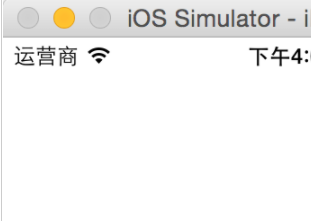枚举语法
使用关键字 enum 定义一个枚举
|
1
2
3
|
enum SomeEnumeration { // enumeration definition goes here} |
例如,指南针有四个方向:
|
1
2
3
4
5
6
|
enum CompassPoint { case north case south case east case west} |
这里跟 c 和 objective-c 不一样的是,Swift 的枚举成员在创建的时候没有给予默认的整型值。所以上面代码中的东南西北并不是0到3,相反,不同的枚举类型本身就是完全成熟的值,具有明确定义的CompassPoint类型。
也可以声明在同一行中:
|
1
2
3
|
enum Planet { case mercury, venus, earth, mars, jupiter, saturn, uranus, neptune} |
枚举赋值:
|
1
|
var directionToHead = CompassPoint.west |
一旦 directionToHead 明确为 CompassPoint 类型的变量,后面就可以使用点语法赋值:
|
1
|
directionToHead = .east |
Switch 表达式的枚举值匹配
switch 表达式如下:
|
1
2
3
4
5
6
7
8
9
10
11
12
|
directionToHead = .southswitch directionToHead {case .north: print("Lots of planets have a north")case .south: print("Watch out for penguins")case .east: print("Where the sun rises")case .west: print("Where the skies are blue")}// Prints "Watch out for penguins" |
当然这里也可以加上 default 以满足所有的情况:
|
1
2
3
4
5
6
7
8
|
let somePlanet = Planet.earthswitch somePlanet {case .earth: print("Mostly harmless")default: print("Not a safe place for humans")}// Prints "Mostly harmless" |
关联值
在 Swift 中,使用枚举来定义一个产品条形码:
|
1
2
3
4
|
enum Barcode { case upc(Int, Int, Int, Int) case qrCode(String)} |
可以这样理解上面这段代码:定义一个叫 Barcode 的枚举类型,带有值类型(Int,Int,Int,Int)的 upc和值类型(String)
现在可以这样创建其中一种类型的条形码:
|
1
|
var productBarcode = Barcode.upc(8, 85909, 51226, 3) |
同一产品的另外一个类型的条形码可以这样赋值:
|
1
|
productBarcode = .qrCode("ABCDEFGHIJKLMNOP") |
可以用 switch 来查看两种不同的条形码类型:
|
1
2
3
4
5
6
7
|
switch productBarcode {case .upc(let numberSystem, let manufacturer, let product, let check): print("UPC: \(numberSystem), \(manufacturer), \(product), \(check).")case .qrCode(let productCode): print("QR code: \(productCode).")}// Prints "QR code: ABCDEFGHIJKLMNOP." |
上面的写法也可以改为:
|
1
2
3
4
5
6
7
|
switch productBarcode {case let .upc(numberSystem, manufacturer, product, check): print("UPC : \(numberSystem), \(manufacturer), \(product), \(check).")case let .qrCode(productCode): print("QR code: \(productCode).")}// Prints "QR code: ABCDEFGHIJKLMNOP." |
原始值
这里是一个保存原始 ASCII 值的枚举类型:
|
1
2
3
4
5
|
enum ASCIIControlCharacter: Character { case tab = "\t" case lineFeed = "\n" case carriageReturn = "\r"} |
和上面关联值类似,在枚举中也可以指定每个 case 的默认值(raw values)。
值得注意的是,原始值和关联值不一样,原始值是在第一次定义枚举代码的时候已经设置好的,所有同类型的枚举 case 的原始值都是一样的。而关联值是你创建一个基于枚举 case新的常量或者变量的时候设置的,可以在每次你创建的时候都使用不一样的值。
隐式分配的原始值
如果枚举中 case 的原始值是整型或者字符串的时候,你不需要给每个 case 分配原始值,Swift 会自动帮你分配好值。
例如:
|
1
2
3
|
enum Planet: Int { case mercury = 1, venus, earth, mars, jupiter, saturn, uranus, neptune} |
Planet.mercury 原始值为1,Planet.venus 拥有一个隐式的原始值为2,以此类推。
如果枚举的原始值是 string 类型,那么他的原始值就是 case 名称的文本,例如:
|
1
2
3
4
5
6
7
8
9
|
enum CompassPoint: String { case north, south, east, west}CompassPoint.south 的隐式原始值是"south", 以此类推。let earthsOrder = Planet.earth.rawValue// earthsOrder is 3 let sunsetDirection = CompassPoint.west.rawValue// sunsetDirection is "west" |
从原始值初始化
如果你定义一个原始值类型的枚举,这时枚举会自动创建一个带有原始值类型的初始化器(参数名称为 rawValue),例如:
|
1
2
|
let possiblePlanet = Planet(rawValue: 7)// possiblePlanet is of type Planet? and equals Planet.uranus |
不是所有的 Int 值都可以找到对应的 planet,所以原始值初始化器会返回一个 optional 的枚举 case,上面的例子中的 possiblePlanet 是 Planet? 类型。
如果你想找原始值为11的 planet,初始化器将返回 nil:
|
1
2
3
4
5
6
7
8
9
10
11
12
|
let positionToFind = 11if let somePlanet = Planet(rawValue: positionToFind) { switch somePlanet { case .earth: print("Mostly harmless") default: print("Not a safe place for humans") }} else { print("There isn't a planet at position \(positionToFind)")}// Prints "There isn't a planet at position 11" |
递归枚举
递归枚举是一个包含有一个或多个枚举 case 的关联值枚举实例的枚举,使用关键字 indirect 标明某个枚举 case 是递归的。
例如,下面是一个保存简单算法表达式的枚举:
|
1
2
3
4
5
|
enum ArithmeticExpression { case number(Int) indirect case addition(ArithmeticExpression, ArithmeticExpression) indirect case multiplication(ArithmeticExpression, ArithmeticExpression)} |
你也可以直接把 indirect 写在枚举定义的最前面:
|
1
2
3
4
5
|
indirect enum ArithmeticExpression { case number(Int) case addition(ArithmeticExpression, ArithmeticExpression) case multiplication(ArithmeticExpression, ArithmeticExpression)} |
下面的代码是示例如何创建这个递归枚举:
|
1
2
3
4
|
let five = ArithmeticExpression.number(5)let four = ArithmeticExpression.number(4)let sum = ArithmeticExpression.addition(five, four)let product = ArithmeticExpression.multiplication(sum, ArithmeticExpression.number(2)) |
应用到计算函数中:
|
1
2
3
4
5
6
7
8
9
10
11
12
13
|
func evaluate(_ expression: ArithmeticExpression) -> Int { switch expression { case let .number(value): return value case let .addition(left, right): return evaluate(left) + evaluate(right) case let .multiplication(left, right): return evaluate(left) * evaluate(right) }} print(evaluate(product))// Prints "18" |
上面例子的算法表达式是:(5 + 4) * 2,结果为18
参考英语原文:
https://developer.apple.com/library/content/documentation/Swift/Conceptual/Swift_Programming_Language/Enumerations.html#//apple_ref/doc/uid/TP40014097-CH12-ID145
总结
以上就是这篇文章的全部内容了,希望本文的内容对大家的学习或者使用Swift能带来一定的帮助,如果有疑问大家可以留言交流,谢谢大家对服务器之家的支持。
原文链接:http://devlong.com/2017/03/12/enumerations-swift-3/













